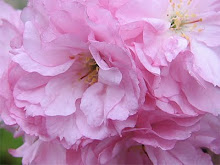
Carl Ferre describes a macrobiotic centering diet in his book, Pocket Guide To Macrobiotics (now revised and renamed Essential Guide To Macrobiotics), which is good for people who are just beginning macrobiotics and anyone else who wants to center themselves in a gentle, peaceful way that enables the body to heal itself naturally. The vegetables listed in this particular diet are from the most yang categories of the vegetable group. Vegetables that grow vertically underneath the ground, or horizontally above the ground fall into this list.
I did not like to eat many vegetables when I was a young kid, especially cooked vegetables! The only ones I liked were raw carrots, lettuce, and cucumber, and cooked potatoes. I've come a long way since then, and now I love to eat all kinds of vegetables, raw or cooked in all manner of ways.
I've come to realize that the proper cooking of fresh, locally grown, organic vegetables makes a big difference in how they taste. I think that I have had just about all of the different kinds of whole grains that make up the primary portion of the centering diet, but there are still many vegetables on this diet listed below that I am looking forward to trying!
A macrobiotic centering diet, as described in Carl Ferre's book, includes any of the following vegetables, 20% to 30% by volume daily. I've rearranged them alphabetically in the list for convenience. There are forty-four different vegetables listed here—I call that a lot of variety!
Group 1: "Less Yang" Category
burdock
carrots
cress
lotus root
parsnips
rutabaga
salsify
turnips
Group 2: "Less Yin" Category
acorn squash
buttercup squash
butternut squash
celery
daikon
green cabbage
Hokkaido squash (kabocha)
Hubbard squash
kale
leeks
onions
turban squash
watercress
Group 3a: (eaten more often than others in Group 3)
broccoli
leafy greens
Group 3: "More Yin" Category
beets
bok choy
broccoli
cauliflower
Chinese cabbage
cilantro
collard greens
corn on the cob
dandelion greens
endive
escarole
green peas
kohlrabi
leaf lettuces
mustard greens
parsley
purple cabbage
radishes
scallions
snow peas
string beans
turnip greens
yellow wax beans
Related Blog Articles:
What Is The Macrobiotic Centering Diet?
Whole Grains For Centering
Beans, Beans, The Musical Fruit
Ten Macrobiotic Diets By George Ohsawa






















































